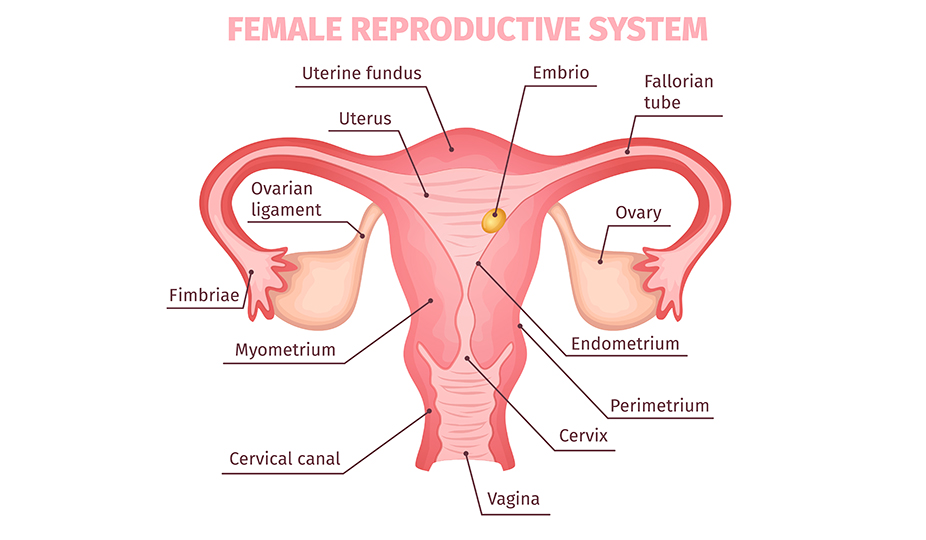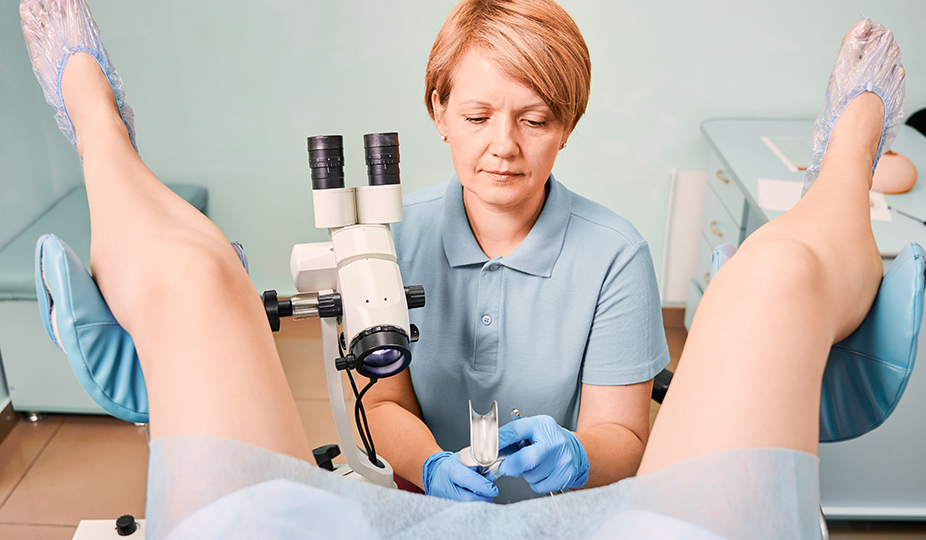Short Cervix – Causes, Symptoms, and Pregnancy Success Stories
Talking about the cervix we have to understand anatomy and math. The normal cervical length for most women is about 4-5 centimeters. A short cervix is anything less than that. Doctors measure it by ultrasound and define a сervical canal as short if its length is less than 4 cm before the 36th pregnancy week. In this article, we will explain, how its size influences fertility and pregnancy, look through its symptoms and causes, and read stories of real women with this condition.
- What Is a Cervix and Short Cervix in Particular?
- What Is a Short Cervix?
- Causes of Short Cervix
- Symptoms of short cervix
- Short Cervix Diagnostics
- Short Cervix Treatment
- Cervical Cerclage
- Progesterone Injection
- Bed Rest
- Monitoring
- Pregnancy Success Stories with a Short Cervix
- Mary, 38 y.o.
- Edith, 31 y.o.
- Maude, 27 y.o.
- Precautions to Take with a Short Cervix
- Conclusion
- FAQs

What Is a Cervix and Short Cervix in Particular?
But first things first, let`s start with the definition! The cervix is the narrow opening of the uterus that extends into the vagina. During pregnancy, it is crucial in supporting the growing fetus. It acts as a barrier between the uterus and the vagina, protecting the growing fetus from infections.
What Is a Short Cervix?
During pregnancy, the cervix changes and becomes shorter, softer, and more elastic to prepare for delivery. Its length of 3 cm or more is considered normal during pregnancy.
However, in some cases, the cervical canal may become shorter than normal. If it is shorter than 2.5 cm, it is considered short.
A short cervix can increase the risk of preterm delivery, which can lead to several complications for the baby. However, with proper diagnosis and treatment, many women with it have healthy pregnancies and deliver full-term babies.
Causes of Short Cervix

This condition during pregnancy is usually caused by a weak or incompetent cervix. The exact cause is unknown. However, several factors can increase its risk, including:
- Previous preterm birth;
- Previous cervical surgery, such as a cone biopsy or cervical conization;
- Infection of the uterus or vagina, e.g cervical incompetence or stenosis;
- Multiple pregnancies, carrying twins, triplets, or more cause increased pressure on the canal;
- Abnormalities of the uterus or cervix;
- Hormonal imbalances;
- Smoking;
- Poor nutrition;
- Stress.
Despite all these factors, some women may have a short cervix without having any of these factors, and the exact cause may not always be clear. Regular prenatal care and monitoring can help detect any cervical changes early and reduce the risk of complications during pregnancy.
Symptoms
A short cervix does not usually cause any symptoms. However, in some cases, women may experience:
- Pelvic pressure or discomfort;
- Vaginal discharge;
- Contractions;
- Spotting or bleeding.
You should contact your doctor immediately if you experience any of these symptoms.
Diagnostics
A short cervix can be diagnosed during a routine prenatal ultrasound. During the ultrasound, the doctor measures the length of the cervix, and if it is shorter than normal (3 centimeters/less than 1 inch during the 24th week of pregnancy), your gynecologist may recommend further testing or treatment.
Treatment
The most common medical treatment for the short cervix is simple evaluation and observation. Doctors inform the patient about the problem and that it can lead to pre-term delivery. Additionally, your fertility specialist may recommend one or more of the following treatments:
Cervical Cerclage

Cerclage is a surgical procedure in which a surgeon places a stitch around the cervix between 12 and 14 weeks of pregnancy to keep it closed during the pregnancy. Don’t worry, it won’t stay there forever, it is a temporary solution and your doctor will remove the stitch at around 37 weeks, or even earlier. As with any medical procedure, you should also discuss the risks and benefits with your doctor to determine if cervical cerclage is right for you.
Progesterone Injection

To prevent premature delivery, your doctor can prescribe you progesterone. You can take this hormone as a weekly injection or a vaginal suppository. An appropriate time for injections is from 16-20 weeks of pregnancy until around 36 weeks. However, you should know that is can cause some temporary side effects, including pain, swelling, and itching at the injection site, as well as headaches, dizziness, and nausea.
Bed Rest
A doctor may recommend bed rest to reduce physical activity and pressure on the cervix, which can help to prevent it from dilating or opening. When the weight is taken off the cervix it can cause even more shortening because of the weight and gravity. Bed rest means that if normally you sleep 8 hours and spend the rest 16 hours up, it is better to cut that half.
Monitoring

Your gynecologist may monitor your cervix length more frequently during the pregnancy. It implies transvaginal ultrasound examinations, as well as regular prenatal appointments to assess overall pregnancy health. The frequency of monitoring may also depend on the gestational age of the pregnancy.
For example, monitoring may be more frequent during the second trimester, when the risk of premature delivery is higher. In general, women with a short cervix may be monitored every two to four weeks during the second trimester, and more frequently if there are any signs of cervical changes or preterm labor.
Pregnancy Success Stories with a Short Cervix
Many women with short cervix go on to have healthy pregnancies and deliver full-term babies. That’s why as soon as you know the diagnosis, follow your doctor’s recommendations and take precautions to reduce the risk. Here are some pregnancy success stories from women with this complication who managed to have successful pregnancies:
Mary, 38 y.o.
“I was diagnosed with a short cervix during my first pregnancy. My doctor recommended cervical cerclage, and I was on bed rest for the rest of the pregnancy. I delivered a healthy baby girl at 38 weeks.”
Edith, 31 y.o.
“My cervix was too short during both of my pregnancies. I received weekly progesterone injections, and my gynecologist monitored my cervix length every next week. Both of my pregnancies went full-term, and I have two healthy girls.”
Maude, 27 y.o.
“I always dreamed of becoming a mother. And I was devastated when a gynecologist told me about my short cervix and that I will have difficulty carrying a pregnancy to term. After trying various fertility treatments with no success, they recommended we try donor eggs.
At first, we were hesitant about this idea. It felt like I was giving up a chance to have a baby, that will look like me or my husband. All in all, after speaking to Anastasia from Sunshine and talking to other women who used donor oocytes, we decided to give it a try.
With the help of a fertility clinic, I was matched with a donor who closely resembled me and had healthy eggs. The fertilization and implantation process went smoothly, and I was thrilled to learn that I was pregnant!!!
Throughout the pregnancy, the doctor closely monitored me due to my condition. I followed all recommendations, took hormonal injections, and had a lot of bed rest.
My journey to motherhood had some unexpected twists and turns, but all in all, at week 36, I gave birth to a beautiful, healthy baby girl. Holding my daughter in my arms, I knew that using donor eggs was the right decision. Although our genetics may not be the same, I have an unbreakable bond with my daughter and will love and adore her forever.”

Precautions to Take
If you have a short cervix, it is important to take the following precautions to reduce the risk of preterm birth:
- Follow your doctor’s recommendations for treatment and often monitoring.
- Avoid activities that can pressure the cervix, such as heavy lifting, sexual intercourse, and prolonged and frequent standing.
- Stay hydrated and eat a healthy, balanced diet.
- Get plenty of rest and reduce stress as much as possible.
- Seek medical attention immediately if you experience any symptoms of preterm labor, such as contractions, vaginal bleeding, or pelvic pressure.
Conclusion
A short cervix can increase the risk of preterm birth, but with proper diagnosis and treatment, many women with this condition go on to have healthy pregnancies and deliver full-term babies. Listen to your fertility doctor and follow the advice to reduce the risk of preterm birth. If you have any concerns about your cervix length or pregnancy, immediately talk to your healthcare specialist.
FAQs
There is no guaranteed way to prevent it, but maintaining a healthy lifestyle, seeking early prenatal care, and following your healthcare provider’s recommendations can help reduce the risk.
Cervical cerclage is usually done under anesthesia, so you should not feel any pain during the procedure. However, you may experience some discomfort or cramping afterward.
Progesterone injections can cause side effects such as pain or swelling at the injection site, mood changes, and headaches. Talk to your healthcare provider if you have any concerns.
In some cases, bed rest may be recommended to help reduce the risk of preterm labor.
Having a short cervix in one pregnancy increases the risk for future pregnancies, but it is not guaranteed.